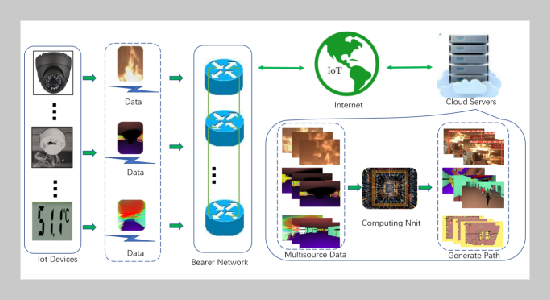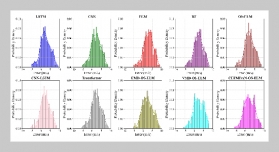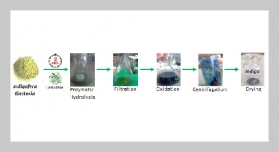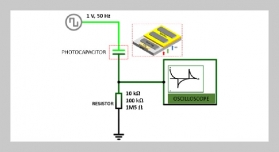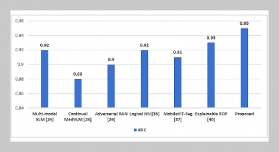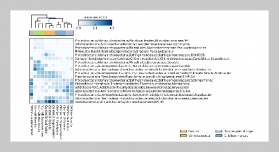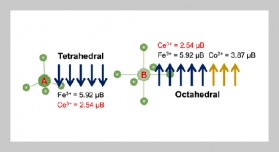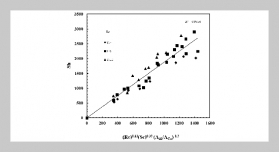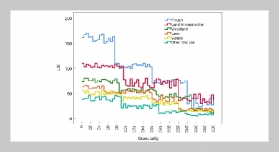- [1] N. N. Khalid, W. K. Al-Saraj, H. F. Naji, et al., (2021) “Behavior of MK-based Geopolymer Concrete Circular Columns Exposed to Fire" Journal of Applied Science and Engineering 24(1): 91–97.
- [2] D. Du, W. Lei, X. Li, and Z. Li, (2023) “Research on sim�ulation and optimization of complex ventilation system in multiple level of Shaxi copper mine" Journal of Applied Science and Engineering 27(10): 3213–3223.
- [3] A. Chen, F. Ding, G. Zhou, and B. Zhou, (2022) “Sim�ulation model of forest fire spread based on swarm intel�ligence" Journal of System Simulation 34(7): 1439–1448.
- [4] J. Yu and C. Wei, (2016) “Indoor Mobile Measurement System Based on SLAM and Its Application" Bulletin of Surveying and Mapping 471(6): 146–147.
- [5] W. Cui and Z. Fazheng, (2023) “A Review of Path Plan�ning Algorithms for Robot Navigation(in Chinese)" Com�puter engineering and Application 35: 1–13.
- [6] Y. Hu, F. Wang, and X. Liu, (2014) “Research on Person�nel Evacuation Strategy in High rise Building Fires Based on ACP Method(in Chinese)" Journal of Automation 40(2): 185–196.
- [7] Z. Zhang, P. Wang, P. Jiang, F. Gao, L. Fu, and Z. Liu, (2022) “Robust control method of grid-connected inverters with enhanced current quality while connected to a weak power grid" IEEE Transactions on Power Electronics 37(6): 7263–7274.
- [8] X. Li, C. Wen, L. Wang, and Y. Fang, (2020) “Topology constrained shape correspondence" IEEE transactions on visualization and computer graphics 27(10): 3926–3937.
- [9] R. Ošlejšek, V. Rusˇnák, K. Burská, V. Švábensky, J. ` Vykopal, and J. Cegan, (2020) ˇ “Conceptual model of vi�sual analytics for hands-on cybersecurity training" IEEE transactions on visualization and computer graph�ics 27(8): 3425–3437.
- [10] S. Yin, (2023) “Object Detection Based on Deep Learning: A Brief Review" IJLAI Transactions on Science and Engineering 1(02): 1–6.
- [11] Y. Jiang and S. Yin, (2023) “Heterogenous-view occluded expression data recognition based on cycle-consistent ad�versarial network and K-SVD dictionary learning under intelligent cooperative robot environment" Computer Science and Information Systems (00): 34–34.
- [12] F. Mirahadi and B. McCabe, (2020) “EvacuSafe: build�ing evacuation strategy selection using route risk index" Journal of Computing in Civil Engineering 34(2): 04019051.
- [13] L. Schmid, M. Pantic, R. Khanna, L. Ott, R. Siegwart, and J. Nieto, (2020) “An efficient sampling-based method for online informative path planning in unknown environ�ments" IEEE Robotics and Automation Letters 5(2): 1500–1507.
- [14] B. Hu, Z. Cao, and M. Zhou, (2020) “An efficient RRT-based framework for planning short and smooth wheeled robot motion under kinodynamic constraints" IEEE Transactions on Industrial Electronics 68(4): 3292–3302.
- [15] C. Wang, L. Wang, J. Qin, Z. Wu, L. Duan, Z. Li, M. Cao, X. Ou, X. Su, W. Li, et al. “Path planning of automated guided vehicles based on improved A�Star algorithm”. In: 2015 IEEE International Conference on Information and Automation. IEEE. 2015, 2071–2076.
- [16] K.-w. Chan, S. Guo, J. Wang, and etc. “Path obstacle avoidance algorithm combining Convex optimiza�tion and A * algorithm(in Chinese)”. In: 2020, 2907–2914.
- [17] T. Qasim, M. Zia, Q.-A. Minhas, N. Bhatti, K. Saleem, T. Qasim, and H. Mahmood, (2018) “An ant colony optimization based approach for minimum cost coverage on 3-D grid in wireless sensor networks" IEEE Commu�nications Letters 22(6): 1140–1143.
- [18] H. Lin and C. Tang, (2021) “Intelligent bus operation optimization by integrating cases and data driven based on business chain and enhanced quantum genetic algo�rithm" IEEE Transactions on Intelligent Transporta�tion Systems 23(7): 9869–9882.
- [19] D. H. Huanca and L. A. G. Pareja, (2021) “Chu and Beasley genetic algorithm to solve the transmis�sion network expansion planning problem considering active power losses" IEEE Latin America Transactions 19(11): 1967–1975.
- [20] R. Liu, Z. Liang, Z. Wang, and W. Li, (2023) “Indoor visible light positioning based on improved whale opti�mization method with min-max algorithm" IEEE Trans�actions on Instrumentation and Measurement 72: 1–10.
- [21] M. Hajjem, H. Bouziri, E.-G. Talbi, and K. Mel�louli. “Intelligent indoor evacuation guidance system based on ant colony algorithm”. In: 2017 IEEE/ACS 14th International Conference on Computer Systems and Applications (AICCSA). IEEE. 2017, 1035–1042.
- [22] X. CAO, X. LI, X. WEI, S. LI, M. HUANG, and D. LI, (2020) “Dynamic programming of emergency evacu�ation path based on Dijkstra-ACO hybrid algorithm(in Chinese)" Journal of Electronics Information Tech�nology 42(6): 1502–1509.
- [23] G. Gao, Y. Mei, Y.-H. Jia, W. N. Browne, and B. Xin, (2021) “Adaptive coordination ant colony optimization for multipoint dynamic aggregation" IEEE Transactions on Cybernetics 52(8): 7362–7376.
- [24] G. Dhiman and A. Kaur. “Spotted hyena optimizer for solving engineering design problems”. In: 2017 international conference on machine learning and data science (MLDS). IEEE. 2017, 114–119.
- [25] G. Dong, F. Yang, K.-L. Tsui, and C. Zou, (2020) “Ac�tive balancing of lithium-ion batteries using graph theory and A-star search algorithm" IEEE Transactions on Industrial Informatics 17(4): 2587–2599.
- [26] S. Liu, M. Watterson, K. Mohta, K. Sun, S. Bhat�tacharya, C. J. Taylor, and V. Kumar, (2017) “Plan�ning dynamically feasible trajectories for quadrotors using safe flight corridors in 3-d complex environments" IEEE Robotics and Automation Letters 2(3): 1688–1695.
- [27] X. Chi, H. Li, and J. Fei, (2021) “Research on robot random obstacle avoidance method based on fusion of im�proved A* algorithm and dynamic window method" Chi�nese Journal of Scientific Instrument 42(3): 132–140.
- [28] F. C. Chen, G. Gugan, R. Solis-Oba, and A. Haque. “Simple and Efficient Algorithm for Drone Path Plan�ning”. In: ICC 2021-IEEE International Conference on Communications. IEEE. 2021, 1–6.
- [29] J. Yu, J. Hou, and G. Chen. “Improved safety-first A-star algorithm for autonomous vehicles”. In: 2020 5th International Conference on Advanced Robotics and Mechatronics (ICARM). IEEE. 2020, 706–710.
- [30] E. Shang, B. Dai, Y. Nie, Q. Zhu, L. Xiao, and D. Zhao. “A guide-line and key-point based a-star path plan�ning algorithm for autonomous land vehicles”. In: 2020 IEEE 23rd International Conference on Intelligent Transportation Systems (ITSC). IEEE. 2020, 1–7.
- [31] A. Yan and K. Ding, (2022) “Optimization of Feature Weights in Case Based Reasoning Prediction Model Based on SHO-SA Algorithm(in Chinese)" Journal of Beijing University of Technology 48(4): 355–360.
- [32] W. Liu, T. Liang, and e. Li Tao, (2022) “Fault diagnosis of variable operating condition rolling bearings based on SHO-VMD decomposition and multiple feature parame�ters (in Chinese)" Machine Tool Hydraulics 50(19): 185–193.
- [33] D. Li, (2021) “Runoff prediction based on PCA-SHO�SVM and PCA-SHO-BP models(in Chinese)" journal of water resources and water engineering 30(1): 97–102.


